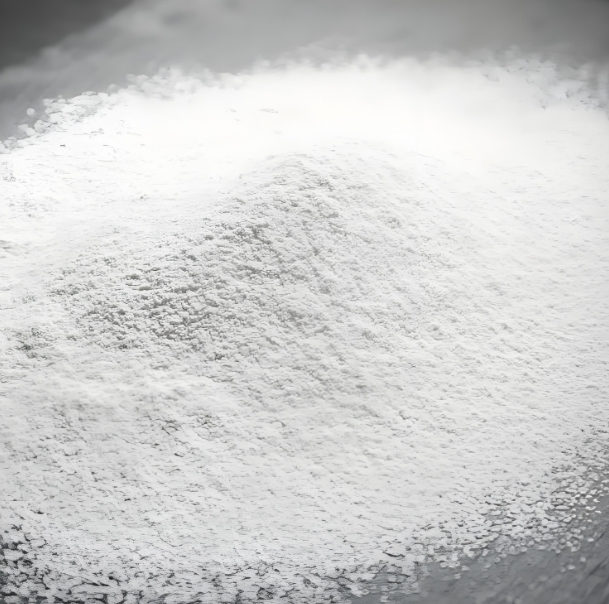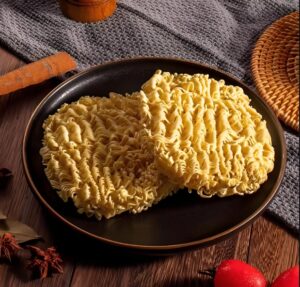<h1>The Versatile Uses of Modified Starch in Various Industries</h1>Modified starch is a key ingredient in many industrial applications, offering enhanced properties over natural starch. By undergoing chemical, physical, or enzymatic modifications, it becomes more versatile for specific uses. This article explores the wide-ranging applications of modified starch, providing insights for businesses in foreign trade and manufacturing. Whether you’re a supplier or buyer, understanding these uses can help optimize your operations and product development.
modified starch making machine
ToggleWhat is Modified Starch?
Modified starch is derived from natural sources like corn, potato, or tapioca through processes that alter its structure. These modifications improve attributes such as solubility, viscosity, and stability, making it suitable for diverse applications. Unlike native starch, which can break down under heat or acidity, modified versions withstand challenging conditions.
The production involves techniques like cross-linking, substitution, or hydrolysis. This allows manufacturers to tailor starch for specific needs, enhancing its functionality in products. In the global market, modified starch is a high-demand commodity, with exports often driven by food and pharmaceutical sectors.
Types of Modified Starch
There are several types of modified starch, each designed for particular purposes. Pre-gelatinized starch, for instance, dissolves in cold water, ideal for instant foods. Cross-linked starch provides resistance to shear and heat, commonly used in sauces and dressings.
Other variants include oxidized starch, which improves whiteness and reduces viscosity for paper production, and esterified starch for better film-forming abilities in coatings. Understanding these types helps businesses select the right product for their supply chains, ensuring efficiency and cost-effectiveness.
Applications in the Food Industry
In the food sector, modified starch serves as a thickener, stabilizer, and emulsifier. It prevents syneresis in products like yogurts and puddings, maintaining texture and extending shelf life. This is particularly valuable for exporters dealing with long-distance shipments.
For baked goods, it enhances moisture retention, improving freshness. In processed meats, it acts as a binder, reducing water loss during cooking. These properties make modified starch essential for creating convenient, high-quality food products that meet international standards.
Beverages benefit from modified starch as a clouding agent, providing a stable appearance in drinks like juices. Its use in gluten-free products also caters to growing health-conscious markets, boosting export opportunities for manufacturers.
Uses in the Pharmaceutical Sector
Modified starch plays a crucial role in pharmaceuticals as a binder and disintegrant in tablet formulations. It ensures tablets hold together during manufacturing but break down quickly in the body for effective drug release. This reliability is key for global pharmaceutical trade.
In capsule production, it improves flow properties and prevents clumping of powders. Its hypoallergenic nature makes it suitable for sensitive medications. Businesses supplying to this industry can leverage modified starch to meet stringent regulatory requirements from bodies like the FDA.
Additionally, it’s used in topical ointments for its film-forming capabilities, creating protective barriers on the skin. As the pharmaceutical market expands, demand for high-quality modified starch continues to grow, offering trade opportunities.
Modified Starch in Paper and Packaging
In the paper industry, modified starch is applied as a coating and sizing agent to enhance strength and printability. It improves surface smoothness and reduces dusting, leading to better-quality paper products. This is vital for packaging exporters aiming for durability.
For corrugated boxes, it provides adhesive properties that withstand moisture and temperature changes. Its eco-friendly profile aligns with sustainable packaging trends, appealing to environmentally conscious buyers. Modified starch thus supports the shift towards green manufacturing.
In specialty papers like filter papers, it adds porosity control and absorption capabilities. Manufacturers can use this to differentiate their products in competitive international markets, driving innovation in paper trade.
Textile Industry Applications
Modified starch is widely used in textiles for sizing, which strengthens yarns during weaving and prevents breakage. This results in higher efficiency in production lines, reducing waste for exporters. Its water-soluble nature allows for easy removal after processing.
In fabric finishing, it imparts stiffness and body to materials, enhancing their feel and appearance. For instance, in denim production, it helps achieve the desired texture. This versatility makes it a staple in global textile supply chains.
Moreover, it’s employed in printing pastes to hold dyes in place, ensuring vibrant and long-lasting colors. As sustainable textiles gain popularity, modified starch’s biodegradability positions it as a preferred choice for eco-friendly processes.
Other Industrial Uses
Beyond food and textiles, modified starch finds applications in cosmetics as a thickener in creams and lotions, providing a smooth texture without irritation. Its natural origin appeals to consumers seeking organic products, benefiting cosmetic exporters.
In the construction industry, it’s used in adhesives and mortars for improved bonding and workability. This enhances the performance of building materials, making them more resistant to environmental factors. Suppliers can capitalize on this for infrastructure projects worldwide.
The oil and gas sector utilizes modified starch in drilling fluids to control viscosity and stabilize boreholes. Its ability to perform under high pressure supports efficient extraction operations. Additionally, in agriculture, it’s incorporated into biopesticides for better formulation and efficacy.
Environmental and Economic Benefits
Modified starch contributes to sustainability by being a renewable resource, reducing reliance on synthetic alternatives. Its biodegradability minimizes environmental impact, aligning with global green initiatives. For businesses, this translates to cost savings and market advantages.
Economically, the production and trade of modified starch stimulate job creation and innovation. Countries with abundant starch sources, like China or the US, dominate exports, fostering international partnerships. Investing in this sector can yield high returns through diversified applications.
Frequently Asked Questions
Below are some common questions about modified starch and its uses:
- What is the main difference between native and modified starch? Native starch is in its natural form and less stable, while modified starch undergoes processing for enhanced properties like heat resistance and solubility.
- How does modified starch improve food texture? It acts as a stabilizer, preventing separation and maintaining consistency in products like sauces and desserts.
- Is modified starch safe for consumption? Yes, when produced under regulated conditions, it’s approved by organizations like the FDA and EFSA for use in food and pharmaceuticals.
- What industries benefit most from modified starch? The food, pharmaceutical, paper, and textile sectors see significant advantages due to its functional versatility.
- How can businesses source high-quality modified starch? Partner with reliable suppliers through platforms like Alibaba or trade shows, ensuring compliance with international standards.
- Does modified starch contribute to sustainable practices? Absolutely, as it’s derived from renewable sources and biodegrades, making it an eco-friendly option for manufacturers.
Conclusion
In summary, modified starch is a multifaceted material with extensive applications across various industries, from enhancing food stability to improving pharmaceutical formulations and supporting sustainable packaging. Its adaptability not only drives innovation but also provides economic opportunities for B2B traders. By integrating modified starch into your operations, you can achieve greater efficiency, meet regulatory demands, and tap into growing global markets. Embrace this versatile ingredient to stay competitive in the evolving world of foreign trade.









